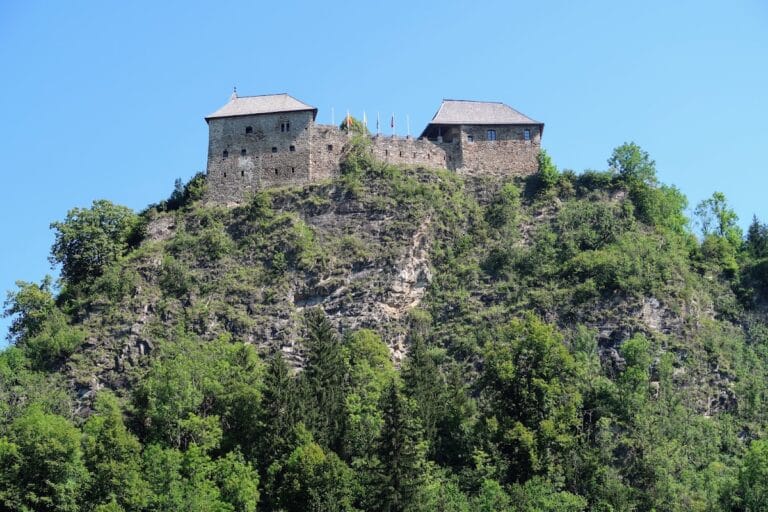Burgruine Eppenstein: A Medieval Castle Ruin in Austria
Visitor Information
Google Rating: 4.7
Popularity: Low
Google Maps: View on Google Maps
Country: Austria
Civilization: Unclassified
Remains: Military
History
Burgruine Eppenstein is a medieval castle ruin situated in the municipality of Eppenstein, Austria. It was originally established by the noble Traungauer family, who ruled as counts and later dukes, and traces its origins back to the early medieval period.
The earliest records mention the castle in 1160, although its initial construction likely dates from the 10th century when it was built primarily of wood. The Traungauer lineage, which owned the castle, came to an end in 1122. Thereafter, ownership passed to the Wildon family. During the Austrian interregnum, the Wildons became involved in a conspiracy against King Přemysl Ottokar II of Bohemia, leading to their loss of the castle, which was occupied by royal troops.
Following King Ottokar’s defeat at the 1278 Battle on the Moravian Field by the Habsburgs, the Wildons regained control, but Burg Eppenstein subsequently changed hands several times. It passed through the possession of various noble families, including the Dukes of Carinthia, and others such as Colledo, Nádasdy, Pranckh, Sessler, and Graben von Stein. These frequent changes reflect the castle’s importance as a strategic and noble seat during the late medieval period.
In 1478, a major reconstruction renovated the castle in the Gothic style, enhancing its defenses to the point that it was considered nearly impregnable. Its steep natural location and strong fortifications made it highly resilient; it reportedly fell only once to an enemy force—and then as a result of betrayal by insiders. A Hungarian military campaign successfully captured the castle during this tumultuous period.
The early sixteenth century brought disaster when a large fire, accompanied by a powerful earthquake, caused severe damage to the fortress. Though partial repairs were carried out around 1570, the building of Neu-Eppenstein, a newer fortress nearby, caused the old castle’s strategic relevance to decline. By 1583, accounts described the site as deteriorating, and in the following decades, it was abandoned and left to fall into ruin.
Since the eighteenth century, no significant efforts have been made to restore the castle. In recent times, a local association named “Castle Eppenstein” has sought to attract funding for renovation, though these initiatives have yet to achieve success.
Remains
Burg Eppenstein is perched atop a steep rock spur approximately 736 meters above sea level, providing commanding views over the village of Eppenstein. The castle’s layout is roughly pentagonal in shape and is categorized as a hilltop ring castle, meaning it is surrounded by continuous defensive walls.
Thick curtain walls form a pentagonal ring that encloses the inner fortress area, which contains the central citadel. At the highest point stands the bergfried, a tall main tower serving both as a watchtower and a refuge in times of attack. Unlike many castles, Eppenstein did not have a separate raised mound known as a motte; instead, it relied on the natural elevation of the rocky spur for defense.
Entrances to the castle were limited to a narrow, winding path that climbed steeply, making approaches difficult for attackers. The main gate was heavily fortified and protected by a deep, water-filled moat crossed by a drawbridge, adding an additional barrier against assault.
The strongest defensive structures included a large gatehouse adjacent to the main entrance and the palas, the main residential building where the lord and his family would have lived. These buildings formed a fortified core along with the bergfried.
During the Gothic reconstruction of the late 15th century, two artillery bastions were added. These protruding structures were designed to accommodate cannon and other gunpowder weapons, reflecting changes in military technology that demanded new forms of defense.
The castle’s slopes are extremely steep, which eliminated the need for an outer ward or bailey (vorburg) to serve as a preliminary defensive courtyard. The combination of natural elevation and robust walls meant the fortress was effectively impregnable except through internal betrayal.
Today, the remains include sections of the curtain walls and bastions, foundations of the bergfried, parts of the gate complex, and the dry moat. These ruins, although not restored, still convey the scale and sophistication of the castle’s medieval defenses.










